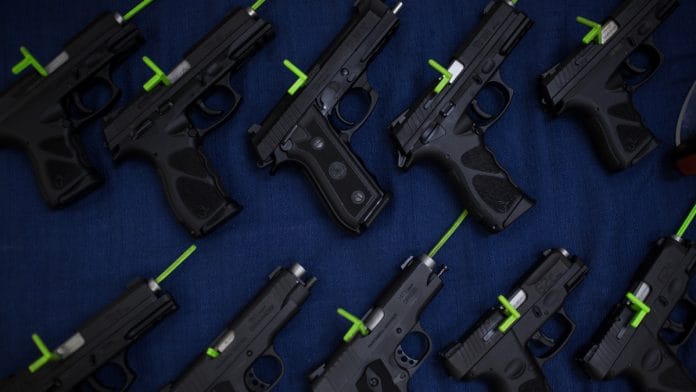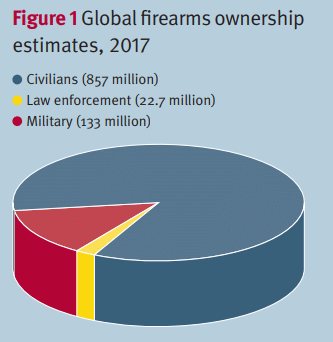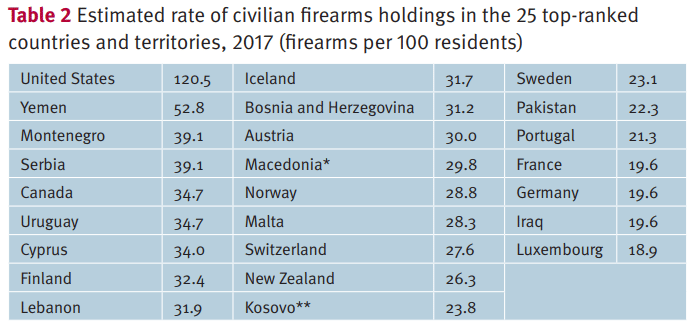New Zealand’s ban on semi-automatic weapons has put guns, violence and regulation back in the spotlight, underscoring the different approaches taken by governments around the world and their relative success.
Prime Minister Jacinda Ardern outlined the plan after a gunman killed 50 people at two mosques in a city on the country’s South Island. The strengthened laws will prohibit military-style semi-automatics and assault rifles, as well as putting in place an amnesty for such weapons to be handed in and a buyback scheme.
“Our history changed forever,” Ardern said as she announced the changes. “Now, our laws will too.”
Touchy subject
Australia’s 1996 gun-law reforms offered her a template. After a massacre in Tasmania killed 35 people, semi-automatic weapons, pump-action shotguns and rifles were removed from civilian possession, and firearm deaths fell. Even so, while evidence and academic studies suggest that the fewer people who have access to firearms, the safer a community is, gun controls remain controversial in some countries, most notably the US.
There are more than one billion firearms in the world and the majority are owned by ordinary people, according to the Small Arms Survey. It estimates that 85% are in civilian hands, 13% are in military arsenals and 2% are owned by law enforcement agencies.
National ownership rates vary hugely, from about 120 firearms for every 100 residents in the US to less than one firearm for every 100 residents in Indonesia, Japan and Malawi.
Japan is also often cited as a gun-control success, with strong and repetitive tests that act as a barrier to ownership. There, only shotguns and air rifles are allowed, and if you want to buy one, you need to attend lessons, pass a written test and a shooting-range test. After that, you would undergo mental-health and background checks.
Also read: New Zealand agrees to amend gun laws after mosque shootings leave 49 dead
Gun culture
The result? Almost no shootings – 0.02 gun deaths per 100,000 people in 2014.
That compares with more than 10 deaths per 100,000 in the same year in the US, where guns are a hotly contested, highly political and often emotionally charged topic.
There, gun rights are defended by the National Rifle Association, which spends heavily to lobby against all forms of control, arguing that weapons make the country safer. It often holds up the nation’s Second Amendment as a reason to protect ownership, saying “the right of the people to keep and bear arms, shall not be infringed”.
Even so, it’s worth remembering that amendment was penned in 1791, when gun technology was still pretty basic and semi-automatic and automatic weapons were around 100 years away from conception and development.
All guns are equal?
Assault rifles, like the AR-15 and AK-47, that fire dozens of rounds of ammunition per minute, came many decades later. Today, they are the gun of choice for Americans, and have played a role in most of the country’s high-casualty shootings, highlighting a dramatic shift in the style and potential impact of gun ownership.
The Small Arms Survey underlines how embedded guns have become, showing that 6% of US adults participated in target shooting with a modern sporting rifle or semi-automatic assault weapon in 2016. That’s about 14 million people.
A 2018 academic paper linked the type of gun available to the outcome.
“More people were wounded and killed in incidents in which semiautomatic rifles were used compared with incidents involving other firearms,” the authors wrote. “Semiautomatic rifles are designed for easy use, can accept large magazines, and fire high-velocity bullets, enabling active shooters to wound and kill more people per incident.”
National variation
Of course there are also some high-profile advocates of stronger controls, including former President Barack Obama and Senator Bernie Sanders, whose post on Twitter backing New Zealand’s new approach was swiftly counteracted by gun advocates:
This is what real action to stop gun violence looks like. We must follow New Zealand's lead, take on the NRA and ban the sale and distribution of assault weapons in the United States. https://t.co/lSAisDG9Ur
— Bernie Sanders (@BernieSanders) March 21, 2019
Back in New Zealand, Ardern expects the new legislation will be in place by 11 April.
“We are announcing action today on behalf of all New Zealanders to strengthen our gun laws and make our country a safer place,” she said. “I strongly believe that the vast majority of legitimate gun owners in New Zealand will understand that these moves are in the national interest, and will take these changes in their stride.”
This article was originally published on World Economic Forum.








